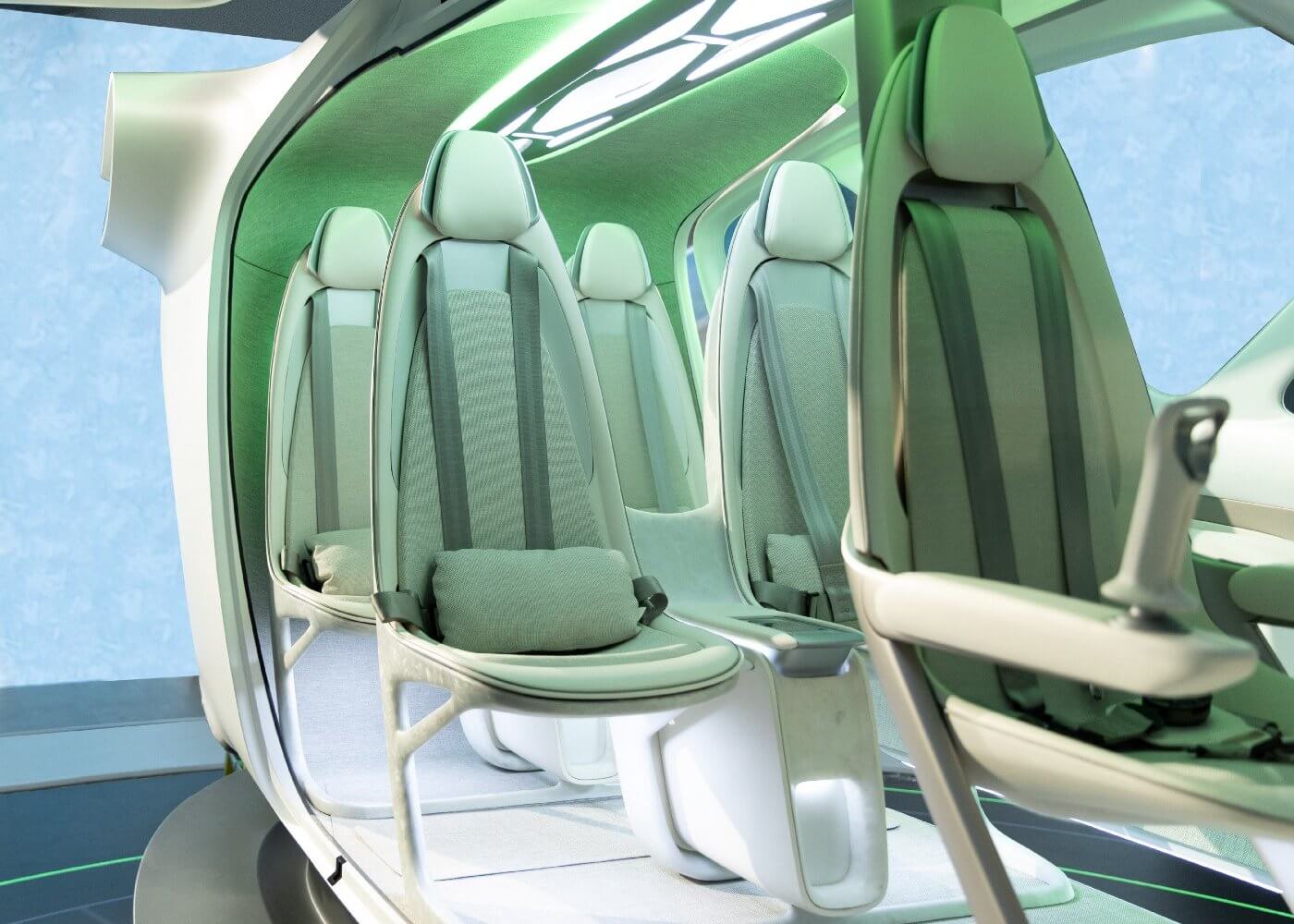Supernal is drawing on the automobile-related expertise of both Hyundai and Rolls-Royce as it develops a family of advanced air mobility (AAM) vehicles.
The company unveiled its Hyundai-inspired initial cabin concept for a five-seat eVTOL aircraft at the Farnborough International Airshow on July 18 and announced it will work with Rolls-Royce to develop hydrogen fuel cell technology in the AAM sector.
“In order for [AAM] to become a widespread mode of transportation, every detail — from the passenger experience to regulations and infrastructure — needs to be addressed from the start and work in lockstep with one another,” said Jaiwon Shin, president of Hyundai Motor Group and CEO of Supernal, in a press release. “Leveraging Hyundai Motor Group’s mobility capabilities, Supernal is investing time and resources up front to ensure the industry can scale to the masses in the coming decades and reach its exciting potential.”
Supernal is a U.S.-based subsidiary of Hyundai Motor Group that aims to certify an eVTOL aircraft for commercial use in the U.S. starting in 2028, followed shortly by certification in the U.K. and Europe.
Lightweight, butterfly-inspired cabin
The initial cabin concept unveiled at Farnborough draws heavily on automotive design and materials, using biomimicry philosophy to resemble the appearance of a butterfly.
Its wing-like side doors enclose a compact passenger area with ergonomically contoured seats that provide a cocoon-like environment.
“We are taking the time to create a safe, lightweight commercial eVTOL that provides our future passengers with the security and comfort they find in their own cars,” Shin said.
Other car-like features in the carbon fibre cabin include deployable consoles that resemble automobile center consoles, including a charging station and stowage compartment.
The cabin’s lighting system adjusts with various stages of flight to emulate a “light therapy” effect, and includes overhead lighting inspired by automobile sunroofs.
Supernal said it is collaborating with external partners and more than 50 Hyundai affiliates to “responsibly co-create” an expansive AAM value chain.
Its human-centered approach to design also includes a focus on environmental stability, the company said.
The initial cabin concept uses advanced, recyclable, carbon fiber reinforced thermoplastic, durable plant-based leather, “responsibly sourced woods,” recycled plastic fabric, and a seat frame made from excess raw material from the airframe manufacturing process.
All of this results in a vehicle that is not only “safe and rational but also highly emotional,” said Luc Donckerwolke, chief creative officer of Hyundai Motor Group.
A family of electric aircraft
Supernal’s long-term goal is to develop a family of air vehicles, plus the surrounding value chain, which would allow them to be manufactured at scale.
The battery-powered eVTOL unveiled at Farnborough is meant for intracity travel, but another Korea-based division of Hyundai is developing a longer range eSTOL aircraft, with hydrogen as the targeted fuel source. Hyundai plans to launch regional air mobility services using this hydrogen vehicle in the 2030s.
In the meantime, Hyundai signed a memorandum of understanding with Rolls-Royce at Farnborough to certify all-electric propulsion and hydrogen fuel cell technology for AAM.
“The [AAM] market offers great commercial potential, and this collaboration supports our joint ambitions to lead the way,” said Rob Watson, president of Rolls-Royce Electrical. “It is also another demonstration of Rolls-Royce’s role in delivering the solutions that will enable passengers to travel sustainably and help deliver net-zero carbon by 2050.”
The companies said they plan to deliver a joint fuel cell and electric aircraft demonstration by 2025.
“We are pleased to partner with Rolls-Royce to draw upon their aviation and certification expertise to accelerate the development of hydrogen fuel cell propulsion systems,” Shin said. “Hyundai has successfully delivered hydrogen fuel cell systems to the global automotive market and is now exploring the feasibility of electric and hydrogen propulsion technologies for aerospace integration.”





